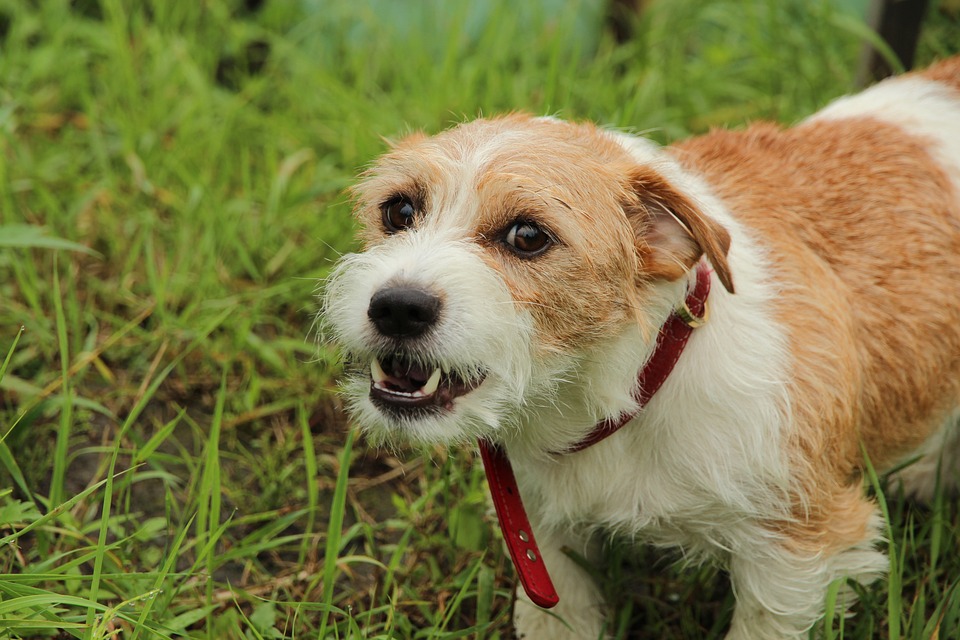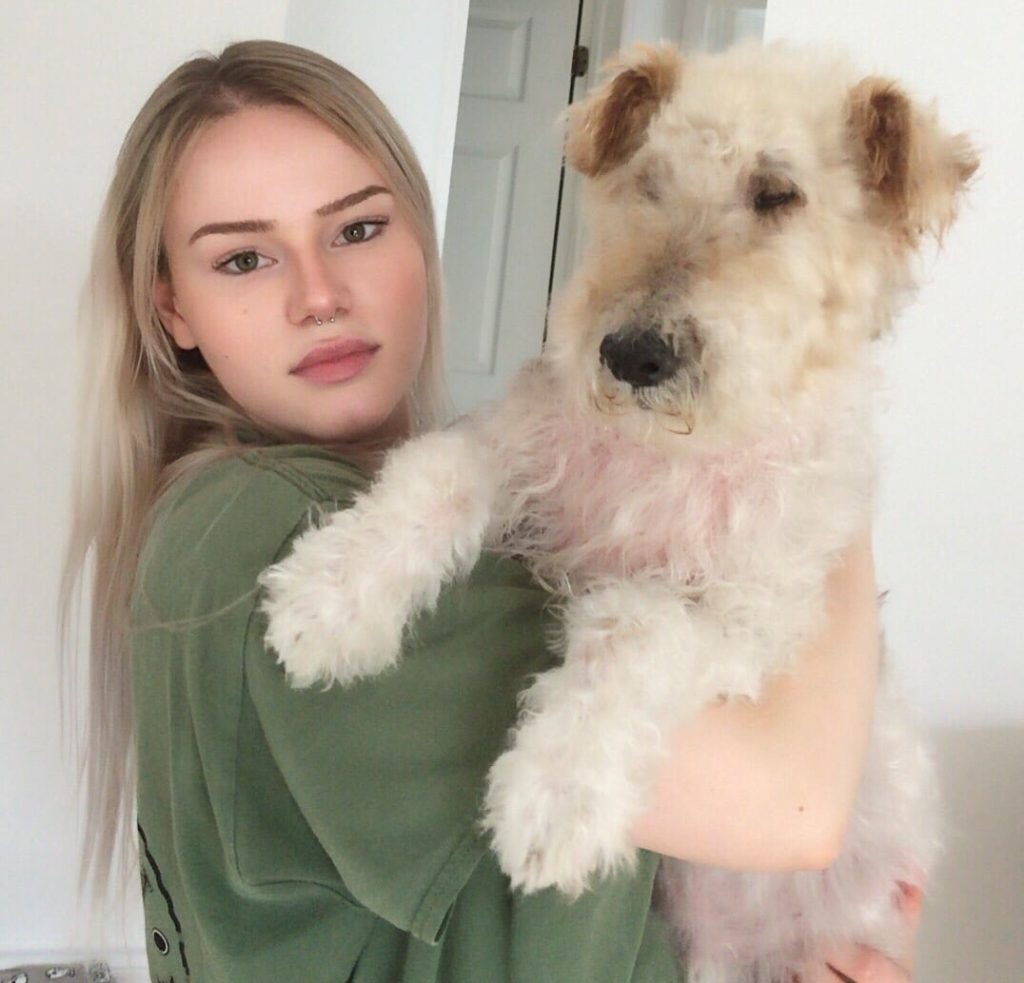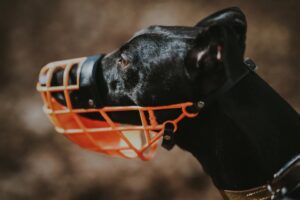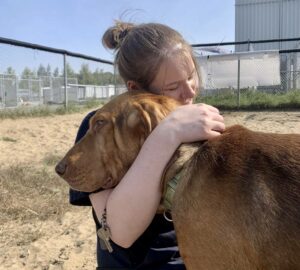In our modern society, dogs occupy a special place as members of the family. However, despite their reputation as loyal companions, it is important to recognize that all dogs can bite and have the potential to become dangerous.
Aggression in dogs is often misunderstood. It is often seen only as a negative behavior, but in reality, it serves several important functions for the dog in its interaction with its environment. The main function of aggression is to create distance.
When a dog feels threatened or vulnerable in a given situation, its survival instinct may dictate to react with aggression to create distance between itself and the source of stress. This aggression is a response to fear and aims to establish a safe zone around the dog. An aggressive dog never intends to take revenge or “dominate” humans.
One of the causes of bites may be that the dog is engaging in predation. This behavior is not a form of aggression since the dog does not seek to create distance; on the contrary, predation seeks extreme proximity, often involving ingesting its prey.
In this article, we will discuss the most common causes of bites as well as associated prevention strategies.
What Causes Dogs to Bite?
#1 – Fear
Fear is one of the main causes of biting in dogs, due to their survival instinct. When a dog feels threatened or frightened in a particular situation, its initial instinct is often self-defense to ensure its safety.
Fear triggers a stress response that can lead to aggressive behaviors as a means for the dog to defend itself and create distance between itself and what it perceives as a threat.
This instinctive reaction is deeply rooted in the dog’s evolutionary history as predator and prey, and it remains a natural response to situations perceived as dangerous or threatening.
In consultation, it is common to see dogs who have bitten out of fear of strangers, other dogs, or handling.
Dogs have their specific body language to communicate with others, but these signals can sometimes be misinterpreted. For example, a dog may show subtle signs of stress or discomfort, such as licking its lips, yawning excessively, or avoiding eye contact, which may be ignored or misunderstood by humans. If warning signals are ignored, the dog may eventually progress to an extreme reaction, such as biting.
#2 – Pain and Illness
Pain and illness can be one cause of dog bites, as they often trigger a defensive response in the animal, which is also closely linked to fear. When a dog experiences pain or discomfort, its ability to tolerate external stimuli may decrease and it may become hypersensitive to handling. Therefore, physical interactions can be associated with a source of stress and discomfort for the animal.
Fear of worsening the condition or experiencing more pain can trigger an aggressive response in the dog, especially if signs of pain are ignored or misinterpreted. This aggressive response may be an attempt by the animal to defend itself to avoid any additional sources of pain or stress.
#3 – Resource Guarding
Resource guarding is a common reason why dogs may bite, as they tend to defend what they perceive to be valuable or essential to their survival. This can include food, a toy, a place, or even a person. When a dog perceives a threat to its resources, its instinct to guard can take over, causing it to behave aggressively.
This aggressive reaction is also linked to fear. When a dog feels threatened by the possibility of losing its resources, it may fear for its safety or well-being. The fear of running out of food or having its territory invaded can trigger an instinctive defense response, leading the dog to bite to protect what is valuable to it.
To learn more about this behavior and how to manage it, see this article: “Resource Guarding: The Complete Guide”
#4 – Fear of Handling
Handling can cause fear or discomfort in the animal, which may lead to biting. When a dog is uncomfortable being handled or is handled too roughly, it may feel threatened or attacked. This feeling of vulnerability can trigger a fear response, which can lead the dog to engage in defensive behavior to protect itself.
Fear of manipulation can manifest in a variety of contexts, including:
-
At the vet
Physical handling during veterinary exams, such as examining ears or paws, can be stressful for some dogs, particularly if they have had negative experiences in the past. Fear of pain or discomfort during these procedures can lead to an aggressive response.
-
When grooming
Dogs can be sensitive to grooming, especially if they are not used to it from a young age. Nail trimming, brushing, or bathing may be perceived as threats by some dogs. Dogs may bite during grooming due to skin sensitivity, fear of the equipment, previous bad experiences, lack of socialization, and stress or discomfort experienced during the procedure. Owners and groomers need to use gentle, positive approaches, recognize signals of discomfort in the dog, and provide rewards to make grooming more enjoyable and reduce the risk of aggressive behaviors.
-
Being abrupt
Dogs are sensitive to physical and emotional stimuli, and sudden gestures or rough handling may be perceived as threats. This feeling of vulnerability can trigger a fear response, which can lead the dog to react aggressively to protect itself.
When a dog is handled abruptly, it can shake their confidence and trusting relationship with their owner or anyone else handling it. Dogs need to feel safe and respected in their environment, and sudden movements can compromise this feeling of security.
For example, abruptly pulling on the dog’s leash, giving it physical corrections, or aggressively grabbing the collar can be perceived as a threat by the animal.
-
Interactions with children
Children may be clumsy or careless when handling dogs, which may cause fear reactions in the animal. Babies and young children who cannot yet understand dog body language should always be supervised during interactions. Young children may be unpredictable and have difficulty controlling the force they use when playing with the dog. It is important to teach children to interact respectfully with animals, supervise them carefully when they are around an animal, and teach them to recognize signs of discomfort to reduce the risk of bites.
#5 – Genetics
Some breeds have been selected for their protective or guarding instincts, which may make them more prone to biting in certain situations.
For example, guard dog breeds like the Rottweiler or German Shepherd often have a strong instinct to protect their territory or family, which can result in aggressive behaviors when they perceive a threat.
Additionally, dogs can carry certain genetic conditions that can affect their mental health, just like humans. For example, certain genetic lines may be predisposed to neurological disorders or hormonal imbalances that can cause aggression. These mental health problems can occur suddenly and without apparent warning, which can make the dog unpredictable and potentially dangerous.
Responsibility for genetics often falls on the breeder, who selects breeding dogs to pass on specific traits to their offspring. An unscrupulous breeder who fails to consider the mental health and temperament of breeding dogs may be contributing to the spread of behavioral and mental health problems down the line of their dogs. Thus, poor selection of breeding dogs can lead to an increased risk of aggressive behavior in offspring.
However, it is essential to note that dog behavior is also influenced by environmental factors.
#6 – Environmental Factors
Environmental factors can have a significant impact on a dog’s behavior and can contribute to the causes of dog bites in several ways:
-
Past experiences
A dog’s previous experiences, such as abuse, neglect, or trauma, can influence its future behavior. A dog that has been abused or poorly socialized may develop aggressive reactions as a way to protect itself or cope with stressful situations.
-
Family environment
A dog’s home environment, including the quality of interactions with family members and other pets, can influence its behavior. Dogs who live in stressful, chaotic, or conflict-filled environments may be more prone to developing aggressive behaviors in response to stress or anxiety.
-
Lack of exercise and mental stimulation
Dogs need regular exercise and mental stimulation to stay physically and mentally balanced. A lack of exercise or stimulation can lead to excess energy and frustration, which can manifest in aggressive behavior.
-
Consequences of behavior
Owners’ responses to a dog’s behaviors can also influence its aggression. For example, if a dog is rewarded or reinforced for aggressive behavior, he may be more likely to repeat it in the future.
-
Conditioning
Dogs can learn to associate certain stimuli with aggressive responses through conditioning. For example, a dog may learn to associate the front door ringing with the arrival of unwanted visitors, which can trigger an aggressive response to defend its territory.
-
Lack of socialization
Lack of socialization in puppies can lead to biting due to their inability to adapt and interact appropriately with their environment. The socialization period, which is usually between 3 and 14 weeks of a puppy’s life, is crucial in allowing him to learn to interact with other dogs, other animals, and humans, as well as to get used to various situations and stimuli.
A puppy who is not properly socialized may perceive many situations as threatening or frightening. In the absence of positive and progressive exposure to different environments, people, and animals, the puppy can develop fear and anxiety towards these stimuli. When feeling threatened or stressed, the puppy may react out of defensive instinct by using biting as a means of protecting itself or signaling discomfort. This behavior can persist throughout one’s life if the problem is never addressed.
Additionally, lack of socialization can lead to gaps in the puppy’s communication and impulse control skills. He may not know how to properly express his discomfort or fear without resorting to aggressive behaviors. For example, an unsocialized puppy may not understand appeasement signals from other dogs or humans and may overreact by biting when feeling threatened.
#7 – Predation
Predation is one of the causes of dog bites due to their instinct to chase and capture prey. This behavior is often more pronounced in certain dog breeds, such as greyhounds, terriers, and hounds, which have been selected for their hunting abilities.
When a dog is faced with a situation where it perceives small prey, such as a cat, rabbit, or even a small child, its predatory instinct may be triggered. In these circumstances, the dog may respond by chasing and capturing the prey using its teeth to bite and hold. This reaction can be perceived as aggression, but it is often motivated by the hunting instinct.
It is important to note that predation is an instinctive behavior in dogs and can be difficult to control, especially in situations where dogs are exposed to small potential prey. However, proper education and supervision from an early age can help reduce the risk of unwanted predatory behaviors, while allowing them to express their natural behavior in safe and appropriate environments.
How to Prevent Dog Bites?
Dogs are fascinating creatures who communicate primarily through their body language and vocalizations. Understanding their signals can play a crucial role in preventing situations that could cause dog bites.
- Education: Educating both adults and children about dog behavior and body language can help prevent misunderstandings and reduce the likelihood of bites. Never pet a dog without letting it smell your hand first. Never run away from a dog or scream in its presence. Avoid direct eye contact with a dog.
- Socialization: Exposing puppies to a variety of different people, animals, and environments from a young age can promote social and confident behavior, reducing the risk of aggression.
- Supervision: Always supervise interactions between dogs and children aged 10 and under, and teach children to interact respectfully with dogs while avoiding sudden movements. Supervise dogs that tend to engage in predatory behaviors when in contact with small animals or children.
- Respect Boundaries: Respect a dog’s space and avoid approaching unfamiliar dogs without the owner’s permission. If you have a reactive dog on a leash, avoid putting him in situations that may frighten him and provoke a reaction. Do not disturb a dog when it is sleeping or eating.
- Training: Basic obedience training can help dogs learn impulse control and appropriate behaviors, reducing the risk of aggression. Always set your dog up for success.
- Veterinary Care: Regular visits to a vet clinic can help ensure that dogs are healthy and free of pain or illness that could contribute to aggressive behavior.
Although dog bites can occur for a variety of reasons, understanding the underlying causes is essential for prevention. By educating ourselves and others about dog behavior, respecting animals, and fostering positive interactions between humans and dogs, we can create a safer community for humans and their four-legged companions. Let us not forget that a well-informed and proactive approach is essential for fostering harmonious relationships between humans and dogs.
Bibliographic sources:
SPCA de Montréal, “Chiens et enfants : comment prévenir les morsure”.






